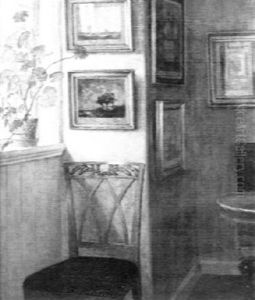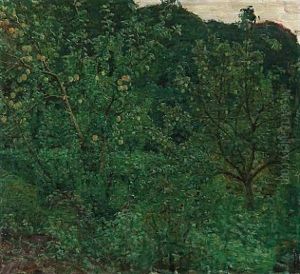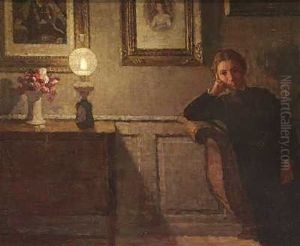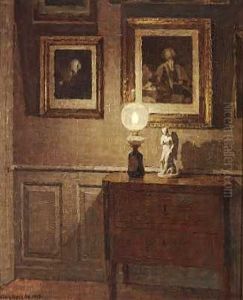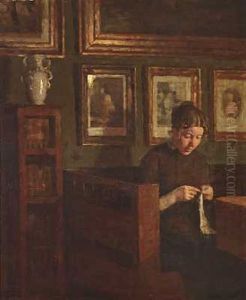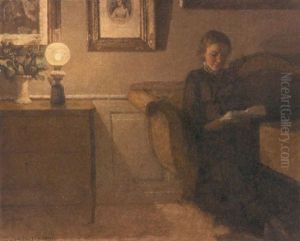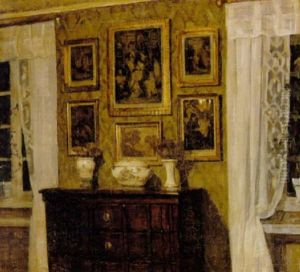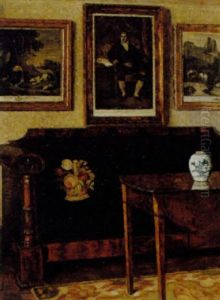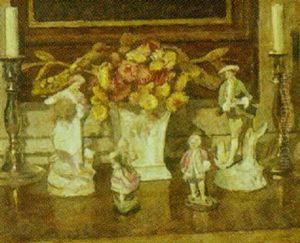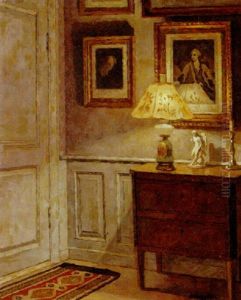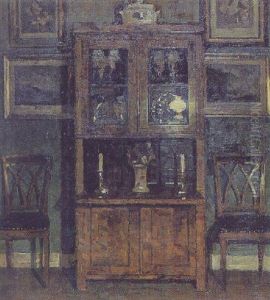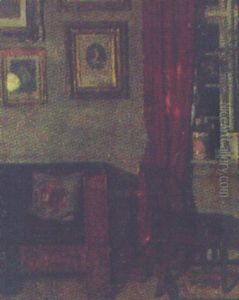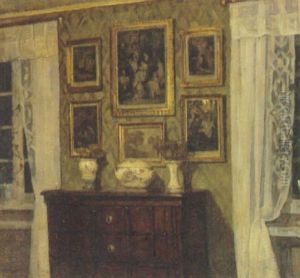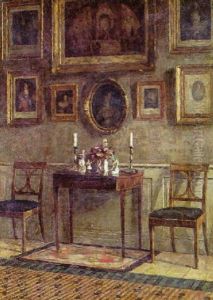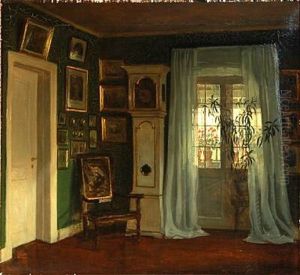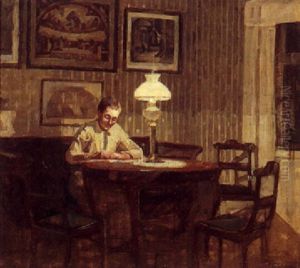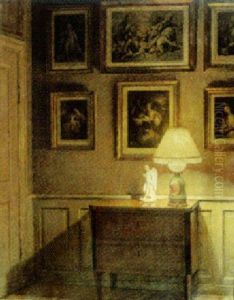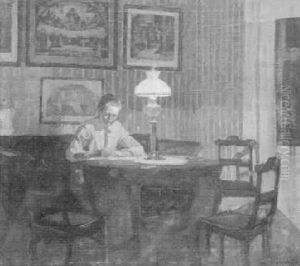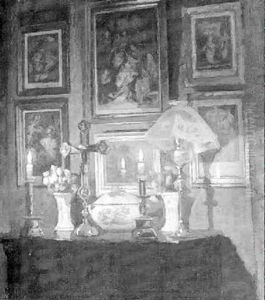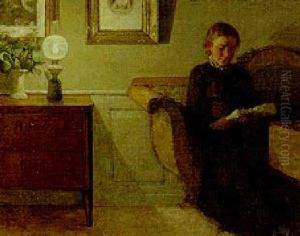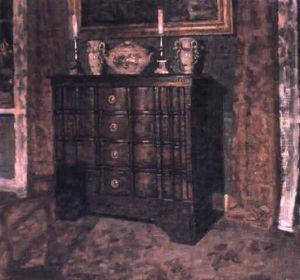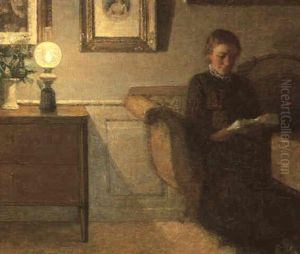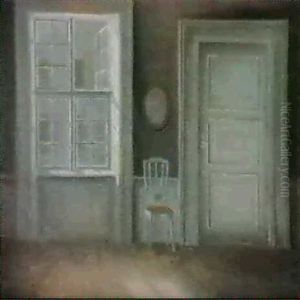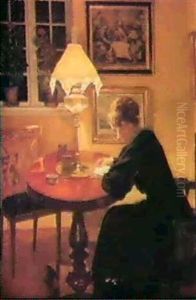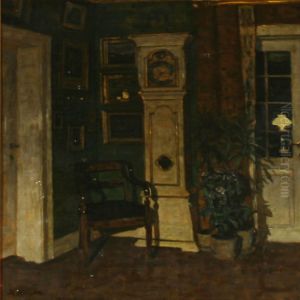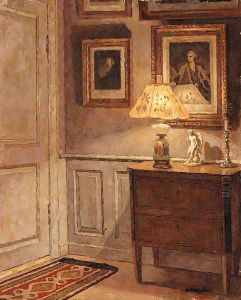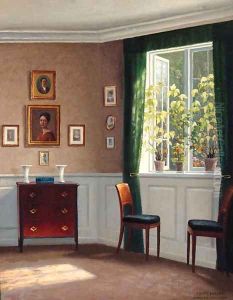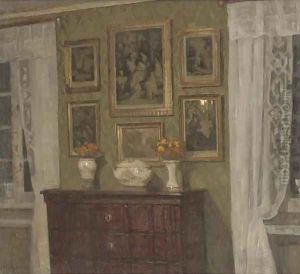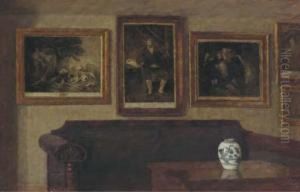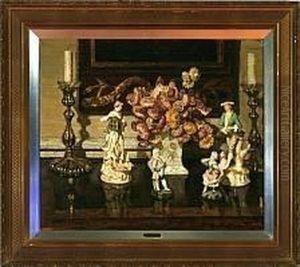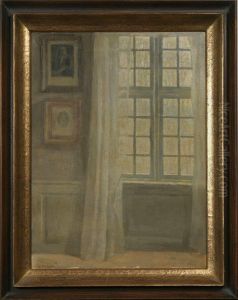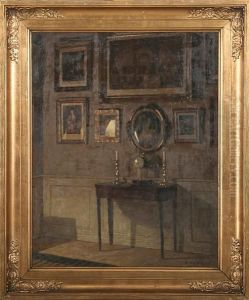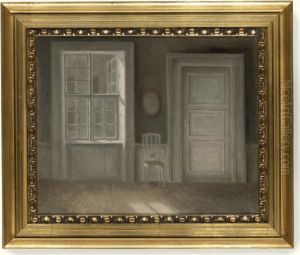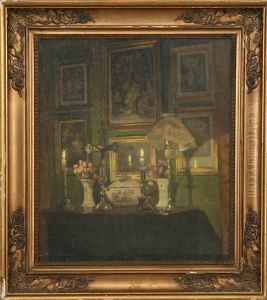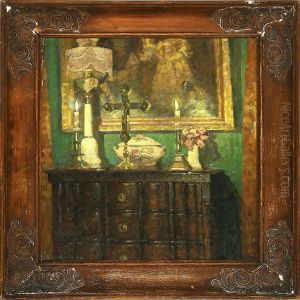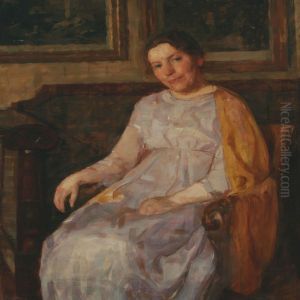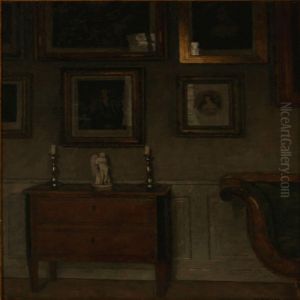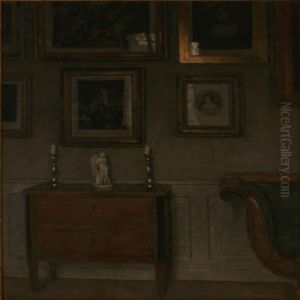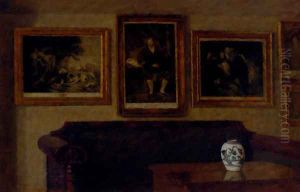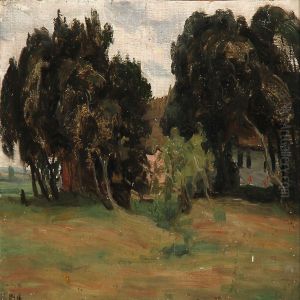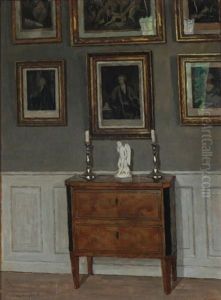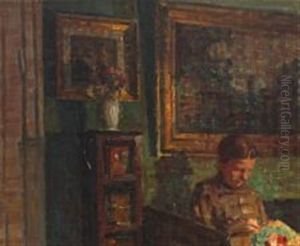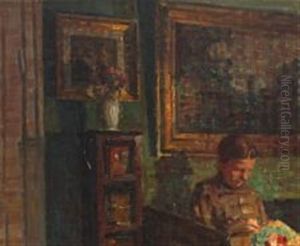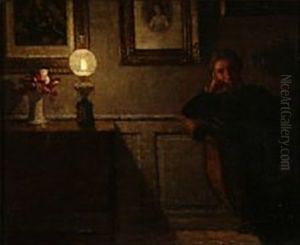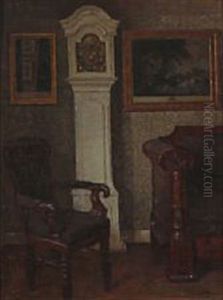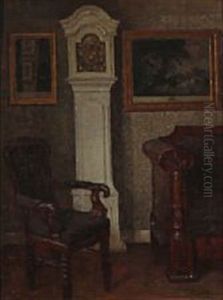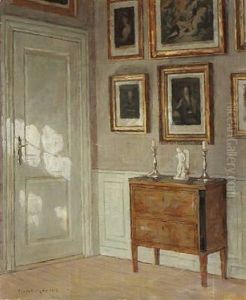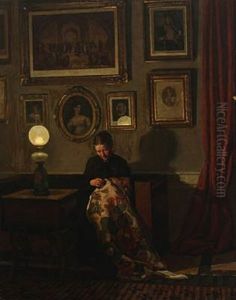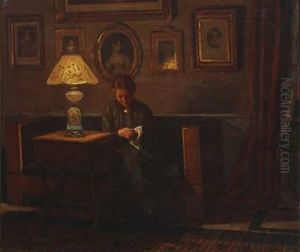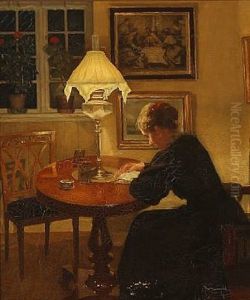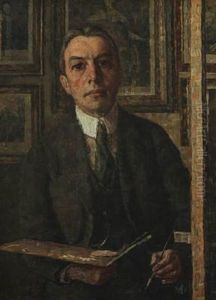Niels Holsoe Paintings
Niels Holsoe was a Danish painter, born in 1865 in Randers, Denmark. He is primarily known for his interior and genre scenes, as well as landscapes. His work is characterized by a quiet, introspective mood and a refined use of light, showing the influence of the Dutch masters as well as contemporary Danish artists. Holsoe was part of the artists' colony in Skagen, a northern Danish town famous for its unique light and its attraction for artists in the late 19th and early 20th centuries. However, unlike many of his contemporaries who focused on outdoor scenery and the vibrant social life of the colony, Holsoe's work often depicted serene indoor settings, giving a glimpse into the private, domestic life of the period.
Holsoe received his artistic training at the Royal Danish Academy of Fine Arts in Copenhagen, where he studied from 1882 to 1886. After completing his education, he traveled extensively, including visits to Italy and France, where he was influenced by the works of the old masters as well as by the modern movements of his time. Despite the influence of European art trends, Holsoe's style remained distinctively Danish, with a focus on simplicity, the beauty of everyday life, and the play of light and shadow.
Throughout his career, Niels Holsoe exhibited his works in Denmark and abroad, gaining recognition for his unique ability to capture the tranquility of interior spaces. His paintings often feature simple, unadorned rooms with figures either engaged in quiet activity or lost in thought, bathed in soft, natural light. This subtle interplay of light and shadow, combined with a palette of soft, muted colors, lends his work a timeless, universal appeal.
Niels Holsoe's contributions to Danish art were part of a broader movement that sought to capture the essence of Danish culture and the beauty of ordinary life. His paintings remain popular in Denmark and are featured in several Danish and international collections. Holsoe passed away in 1930, leaving behind a legacy of art that continues to be celebrated for its serene beauty and its intimate portrayal of domestic life.
